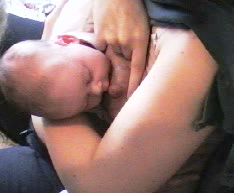Tear off Sheets Attachment The Key to Successful Breastfeeding 1 Pad
$27.50
Inc GST AUD
$25.00
Outside Australia
For bulk discounts, please select below
Attachment Tear-off sheets are still available
Single side - A4 (8¼ x 11¾ inches) Revised and Updated June 2012
A Deep Latch is the Key to comfortable, effective
breastfeeding.
HELP for mothers experiencing attachment problems, painful feeding or sore nipples and when poor attachment is contributing to engorgement, mastitis, low infant weight gains or low milk supply.
Help for mothers with flat or inverted nipples and babies with more recessed chins, shorter tongues or mild tongue tie.
“… in a hospital setting with very little time… your chart … is worth far more than a thousand words! The diagrams are outstanding! read more ....
RN Lactation Consultant – Name withheld
Demonstrates and Describes:
- How to help a baby take a deep comfortable mouthful of breast.
- Why such deep attachment allows pain free breastfeeding & good milk removal.
- The practical steps that support a baby’s inborn latching behaviours.
The attachment behaviours demonstrated in this chart are useful across the spectrum of early breastfeeding problems and are especially helpful when anatomical variations, such as, flat or inverted nipples, a more recessed chin, shorter tongue or mild tongue tie interfere with a baby’s ability to scoop up an adequate mouthful of breast.
Sit with a mother and use the unique illustrations to explain:
- How her baby needs to take the breast for comfortable effective breastfeeding.
- Why baby chooses to approach the breast with chin & mouth forward and head tilted back
- Why baby needs to take more breast below her nipple.
To help baby position the tongue and lower jaw deep under the breast and allow the nipple to roll to the back of baby’s mouth, a safe place where it cannot be pinched or damaged.
 How to offer baby more breast below the nipple.
How to offer baby more breast below the nipple.
Also use the hamburger analogy described in the ‘Holding Me” chart, or see Glover, R. Wiessinger, D. (2012)
- Where baby’s bottom lip needs to anchor on the breast for a deep latch
Areola size varies – the bottom lip needs to anchor at least 3-4 cm from the base of the nipple
- How a deep latch helps her baby remove good quantities of milk from the breast.
- Feeding behaviours that indicate baby is breastfeeding effectively.
References & Recommended Reading
© Rebecca Glover – Last updated Dec 2012
May be copied for individual educational purposes only. All other reproduction prohibited unless written permission is obtained from the author.





